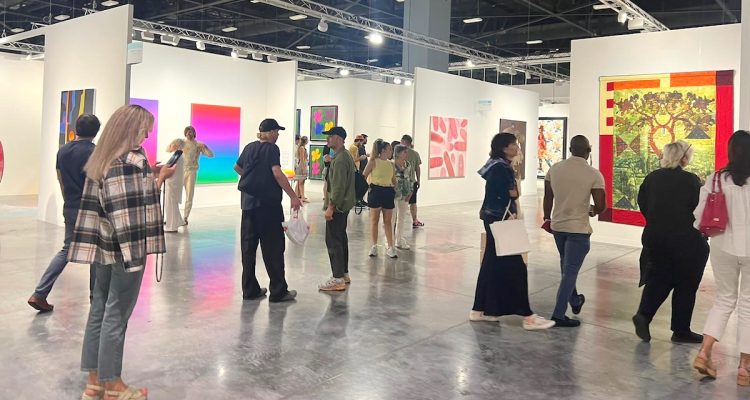By Liam Davis
As I set out to parous the booths of Art Basel Miami this year, a tired phrase comes to mind. This is not my first Rodeo. I’ve made this pilgrimage nearly every year going back to 2004. Suddenly I find my years of experiencing Miami’s art week has come crashing down on me, like the contents of a disorganized closet, that has been held in place by the shutting of its door.
In 20 years, many aspects of what is often referred to as the “art world” has changed. Most recently like the contents of my memory closet financial pressure has crashed down upon it. The staggering price of commercial real estate in the United States primary art cities, New York and Los Angeles have left galleries with little room for risk or innovation. Many struggle to archive the income need to meet their rent and rising operation costs. In response art dealers have become increasingly pragmatic and risk adverse, exhibiting work deemed by “art world” group thinkers as sellable. The market’s obsession with art as an investment has created an unsustainable focus on immediate returns, driving speculation in both primary (gallery) and secondary (auction) markets. With the increasing focus on the financialization of art, the sale of art works for large sums became a source of publicity. The recent sale of René Magritte’s L’empire des lumières at Christies for over 121 million dollars maintains the premise that art can still be a sound investment. However, anyone knowledgeable of the current state of the art market knows that examples of exorbitant prices are now the exception not the rule.

The current art market has a liquidity problem. Fine art has become increasingly difficult to resell. Changing configuration of the primary and secondary market. Artists’ works often sell at high prices on the primary market but struggle to achieve similar results at auction. Pricing art remains highly subjective and can feel absurd compared to tangible assets. Galleries work hard to enhance perceived value by placing artworks in prestigious contexts, fostering belief in art as an appreciating asset. However, artists such as Pat Steir’s paintings are currently priced for over $700,000 in galleries but rarely archive that range at auction. Frank Stella’s auction sales fall far below his new work prices. Artist such as Oscar Murillo and Dan Colen paintings that once commanded high prices now significantly underperform.
With few exceptions art proves to be a risky investment. A single successful piece might pay for an entire collection, but most art doesn’t hold or grow in value. High-profile cases such as Inigo Philbrick, reveal the risks of speculative buying. However, reality often diverges, with numerous cautionary tales demonstrating the volatility and illiquidity of the market. The art market’s fixation on investment has created unrealistic expectations. While galleries and auction houses profit from this narrative, many collectors face losses, as art’s liquidity and long-term value often fall short of the hype. This deeper dive into the complexities of the art market highlights the need to rethink art as merely a financial asset.
As 2024 comes to an end anecdote of gainful returns on art investing have become few and far between and the decline in demand spans across all career stages and price points, with notable unsold works at Phillips from major artists like Robert Rauschenberg, Hank Willis Thomas, and Lisa Yuskavage. The legendary art dealer Jeffrey Deitch has characterized the market downturn as “not a soft landing.”
My boyhood hero the art dealer Arne Glimche believes that “Art is not an investment. Art is something you buy because you are financially solvent enough to give yourself a pleasure of living with great works rather than having to just see them in museums. People who are buying art at the top of the market as an investment are foolish.” I’ve always loved that sentiment, but it has also always left me asking a series of questions. Who are these purest collectors who are not interested in art as an investment but the pleasure of living with great works? Where have they gone? As the secondary market sputters and the financialization of art consumes the primary market, what is to become of the “art world” as we’ve known it?
